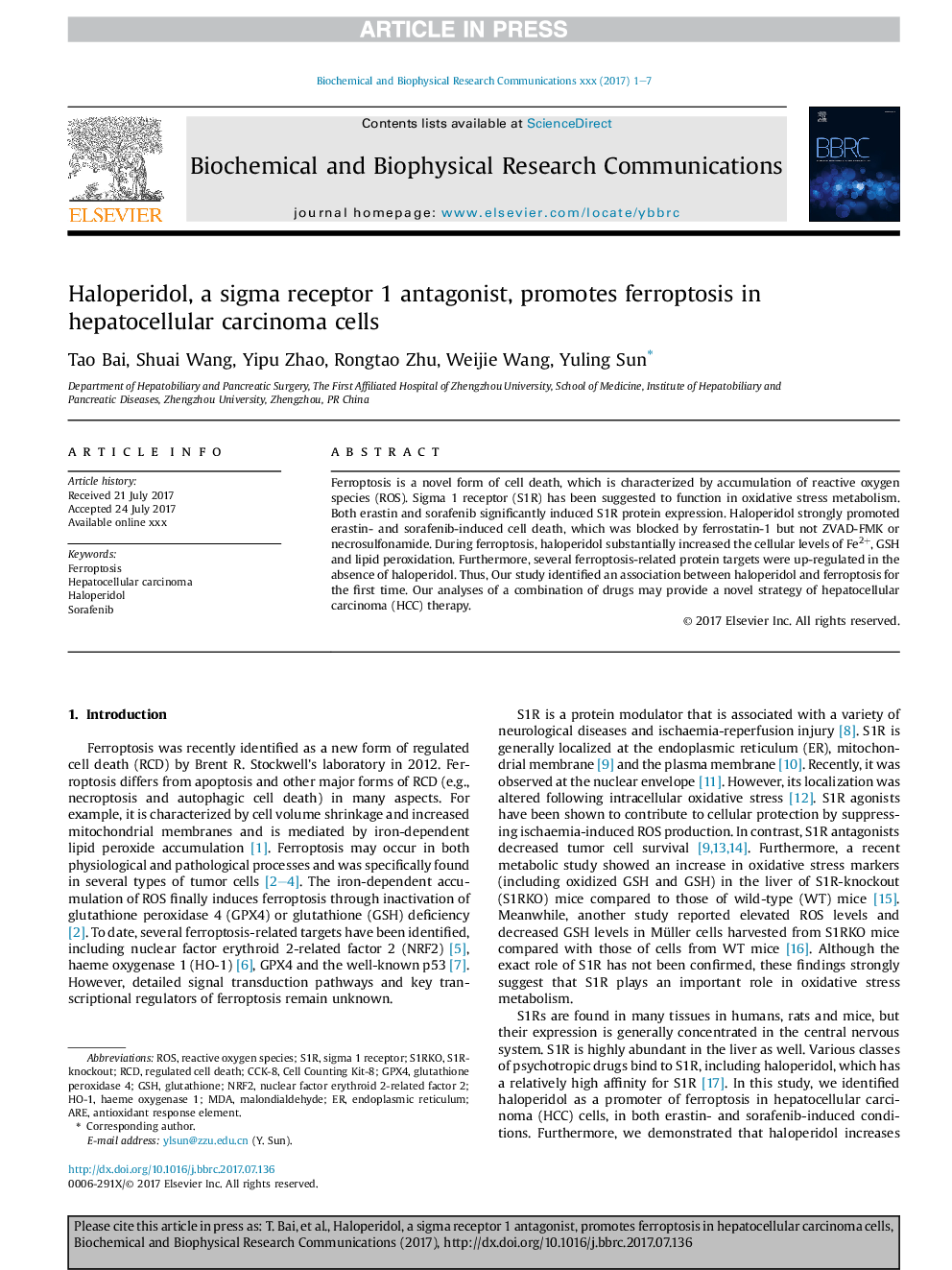| Article ID | Journal | Published Year | Pages | File Type |
|---|---|---|---|---|
| 5504753 | Biochemical and Biophysical Research Communications | 2017 | 7 Pages |
Abstract
Ferroptosis is a novel form of cell death, which is characterized by accumulation of reactive oxygen species (ROS). Sigma 1 receptor (S1R) has been suggested to function in oxidative stress metabolism. Both erastin and sorafenib significantly induced S1R protein expression. Haloperidol strongly promoted erastin- and sorafenib-induced cell death, which was blocked by ferrostatin-1 but not ZVAD-FMK or necrosulfonamide. During ferroptosis, haloperidol substantially increased the cellular levels of Fe2+, GSH and lipid peroxidation. Furthermore, several ferroptosis-related protein targets were up-regulated in the absence of haloperidol. Thus, Our study identified an association between haloperidol and ferroptosis for the first time. Our analyses of a combination of drugs may provide a novel strategy of hepatocellular carcinoma (HCC) therapy.
Keywords
MDACCK-8S1RGPx4RCDHO-1Nrf2GSHROSSorafenibSigma 1 receptorendoplasmic reticulumcell counting kit-8antioxidant response elementnuclear factor erythroid 2-related factor 2Ferroptosismalondialdehyderegulated cell deathHaloperidolAREHepatocellular carcinomaGlutathioneglutathione peroxidase 4Reactive oxygen species
Related Topics
Life Sciences
Biochemistry, Genetics and Molecular Biology
Biochemistry
Authors
Tao Bai, Shuai Wang, Yipu Zhao, Rongtao Zhu, Weijie Wang, Yuling Sun,
